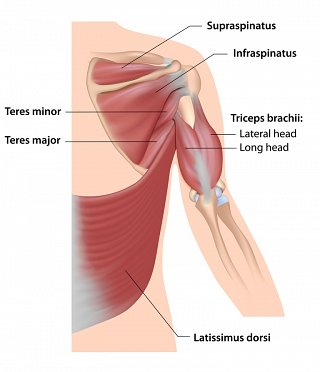Shoulder Anatomy
If you have shoulder pain, it does help to have a basic understanding of Shoulder Anatomy to ensure you take the best approach to shoulder pain relief. So,
What is the anatomy of the shoulder?

Shoulder anatomy is very complex indeed!!
I remember being in college and finding it the most difficult joint to digest and understand! Ask many physios in daily practice and they will tell you the same! Let me try and keep it as simple as I can.
-
Your shoulder is made up of two bones, the Humerus and the Scapula. The ball part of the shoulder joint is made up of the head of the humerus and the socket is made from the glenoid of the scapula.
-
The joint where the head of the humerus meets the glenoid of the scapula forms the gleno-humeral joint, which is the main joint of the shoulder complex. It is a flexible ball and socket joint.
- The joint itself is cushioned by articular cartilage. This covers both the head of the humerus and the articulating surface (in other words the socket) of the glenoid.
The gleno-humeral joint is stabilised by a ring of fibrous cartilage surrounding the glenoid bone called the labrum.
The shoulder is known as the “floppy” joint of the body! It is a ball and socket joint. However, it is a loose packed ball and socket joint which means it relies on the ligaments and muscles to hold it in place.
Compare that with the hip, which is also a ball and socket joint, it is physically very different. The hip has a deeper socket which surrounds and supports the ball of bone that it holds. Although the hip joint also has ligaments and muscles it does not rely totally on them to hold it intact - whereas the shoulder does.
So far, I hope you can see how easy it would be for your arm to fall off!! Without the ligaments, tendons and muscles of the shoulder your arm would quite simply be hanging on your skin and gravity would eventually pull it towards the ground!
So let’s chat a little about the ligaments, tendons and muscles of your shoulder.
Sponsored links
Shoulder Anatomy - Ligaments, Tendons & Muscles

Ligaments are a soft tissue that connect bone to bone. In the case of your shoulder they connect the humerus (arm bone) to the scapula (shoulder). Ligaments do not contract; therefore they are not responsible for moving your arm. They simply act as an anchor, connecting one bone to another.
Tendons are located a soft tissue that connect a muscle to a bone. There are many tendons around the shoulder joint. Tendons are the end of a muscle. Although they are part of a muscle their role is not to move the shoulder joint, but instead they are responsible for connecting the muscle to the bone. A very important role!!
Muscles are a soft tissue that contract and move your shoulder joint. The very fact that you can lift your arm up is as a result of the muscles involved in this movement contracting, shortening and the result is movement!!Quite an amazing concept really!
There are many muscles around the shoulder joint and depending on what movement you are doing will dictate which muscle is working at that time. Muscles also stabilise your shoulder joint and stop it from falling out of position.
Common Shoulder Injuries

The most common shoulder injuries that I see in my clinic are related to your rotator cuff. Your rotator cuff arises from four short muscles which come from the scapula and pass around the shoulder where their tendons fuse together to form the rotator cuff.
All the ligaments, tendons and muscles of your shoulder and upper body work together to allow you to move and function with ease.
When this system becomes imbalanced or injured the stress that results on your shoulder can give you pain as well as damaging the structure of this amazing piece of architecture! Look after it!
DISCLAIMER
While the content and materials contained in the articles on this website have been written & researched by Sally Ann Quirke, a professional, practising & fully qualified Chartered Physiotherapist (Physical Therapist) based in Ireland, they are provided for general information and educational purposes only. They do not constitute medical advice on any particular individual situation. Please see your Chartered Physiotherapist or other medical practitioner for full and individual consultation.
Please read the full disclaimer here.
Cookies and Privacy
By using this website, you consent to the use of cookies in accordance with our cookie policy. For more information on how we use cookies, please read our cookie policy here.
